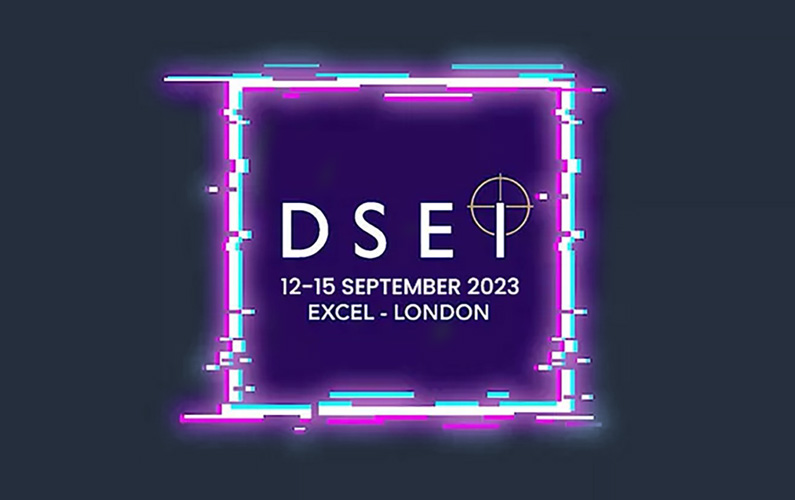From 12 to 15 September, the core of the defence industry met at Excel London for the 2023 edition of the Defence Security and Equipment International, DSEI in short. The show included big names like BAE Systems, Lockheed Martin, Thales and Rolls Royce, which displayed the most cutting-edge products and technologies in defence.
To see what stood out in the media debate around the show, we analysed 1,276 English-language articles published in the last month. Here are our main findings:
1. AI generated much media hype
Our analysis revealed that the media conversation prominently focused on the role of AI in modern defence and military strategies, in line with the hype around AI in almost every industry right now.
Specifically, much of the discourse zeroed in on the integration of AI in data analytics and autonomous systems. Industry experts and military officials, including the UK Royal Navy, emphasised the transformative potential of AI technologies in redefining military defence, highlighting how AI could revolutionise data collection and analysis for real-time situational awareness as well as facilitate the deployment of unmanned systems for more efficient and lethal operations.
Against this backdrop, companies garnered significant media attention for their innovative contributions to autonomous technology. For instance, BAE Systems emerged as the most influential organisation in the debate as it presented its work on autonomous uncrewed air systems (UAS) in collaboration with aircraft engineering company QinetiQ.
Leonardo emerged as the second most influential company, gaining attention for its extensive adoption of autonomy and automation in its mature concept of the technology demonstrator, known as project “Proteus.” Another firm that gained media attention for its advanced AI capabilities was Milrem Robotics, which presented the Type-X Robotic Combat Vehicle (RCV), a vehicle equipped with a mixed reality situational awareness system that is designed to navigate the battlefield autonomously.
2. “Partnership” was the buzzword of the show
A number of companies used the DSEI 2023 event in London to announce not only new products but also key cooperation agreements that could shape the future of defence technologies. Following the trend set by DSEI Japan earlier this year, many publications reported that DSEI took off on a global note and amidst partnership galore – certainly, the buzzword in the media debate was “partnership”.
The Global Combat Air Programme (GCAP) was again a major news driver at the event. A significant development was the announcement by Britain’s BAE Systems, Japan’s Mitsubishi Heavy Industries, and Italy’s Leonardo that they have agreed on the next steps to deliver the concept phase of a next-generation combat aircraft that was highlighted in the showroom of the fair in Japan.
Other notable cooperation stories from DSEI revolved around Sweden’s Saab, which signed strategic agreements with both Singapore’s ST Engineering and UK’s Babcock. Meanwhile, BAE Systems has also signed an agreement with Indian conglomerate Larsen & Toubro to offer the Articulated All-Terrain Vehicle (AATV), ‘BvS10’, for an Indian armed forces programme.
3. Anti-war campaigners had a stronger voice
Just like DSEI Japan earlier this year, DSEI London also found itself at the centre of media debate that included protests against the arms trade. However, what set DSEI London apart was the emergence of an anti-war protestor – Emily Apple of Campaign Against Arms Trade (CAAT) – as the most influential spokesperson in the debate. She outshone executives from major defence companies like BAE Systems, Larsen & Toubro and Lockheed Martin in capturing public attention.
Apple was cited as saying that arms dealers do not care about peace or security but about perpetuating conflict because it increases profits for their shareholders.
The protests against the arms fair were framed by the media as both a moral and political struggle, spotlighting the UK government’s willingness to prioritise profits over human lives. Activists, including Apple, were depicted as taking direct action to shut down what they described as a “marketplace in death and destruction.”
The narrative also underscored the widespread arrests during protests, with activists blocking roads and holding prayer services. This framing challenged the industry-centric conversations usually dominating such international arms fairs and highlighted the ethical questions surrounding the global arms trade.
Why media analytics is vital for event PR
Major industry events like DSEI tend to generate a significant amount of media coverage. In this context, media analytics solutions are essential for PR and communications for at least three reasons:
- Evaluating Organisational and Spokesperson Performance: Shows like DSEI are prime opportunities for organisations to unveil new products and technologies. Media analytics could provide granular insights into how these announcements perform in the media landscape, including how the products are framed, how they compare to competitors, and how the reach and penetration of strategic messages vary across different markets and media formats. Stakeholder mapping can also show where and how the company’s spokespeople were quoted, allowing for a comprehensive evaluation of your thought leadership strategy.
- Preparing for Upcoming Events: Thematic and message analysis offers crucial insights into the kinds of campaigns and messages that garner the most engagement. This enables PR and communications professionals to tailor future initiatives towards strategies that connect with their intended audience, optimising media ROI in the process. Moreover, by studying the successful approaches of competitors, teams can gain guidance on how to craft effective tactics for future events.
- Feeling the Industry’s Pulse: Major trade shows offer a snapshot of the current state of the industry, so it’s important to identify emerging trends and topics that are gaining traction. This information is crucial for understanding if there’s a media “white space” — untapped topics or narratives — that your organisation can occupy with its strategic positioning.
